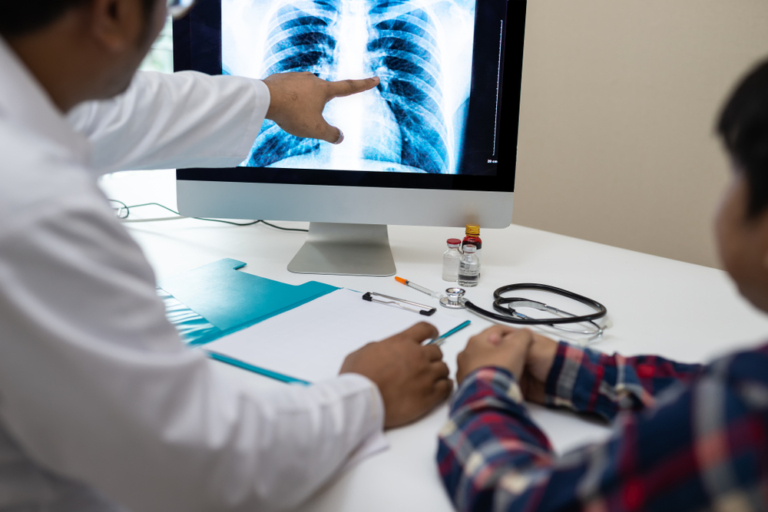Dr. Patricia Hudgins Weighs in On The Importance of Patient-Radiologist Interactions
With greater access to medical information, patients are gravitating toward healthcare models that empower them with opportunities to take a more active role in the decision making process. At the forefront of this evolution is a push for a more collaborative healthcare experience, with more personalized time with their providers. In radiology, however, there continues to be a lack of direct communication, with most radiologists receiving and interpreting images from afar, and the patient never having an opportunity to interact with them.
We spoke to Dr. Patricia Hudgins, former Director of Neuroradiology at Emory University and member of DocPanel, to discuss the important role improved interaction plays in a patient’s diagnostic journey, and how a second opinion can help bridge this gap.
The Issue
“Healthcare revolves around radiology. Everybody who has even a minimal problem will usually get some sort of a scan, whether it be a chest x-ray, CT or MRI.” says Dr. Hudgins “But the wording on these reports is complicated. And very rarely does a patient get the chance to ask questions and get answers.”
Dr. Hudgins has been practicing head and neck radiology for over 25 years, with much of her work focusing on directing patient care, and surveying the impact of direct interaction between radiologists and patients. She explains that when it comes to radiology, there’s a huge need to address the interplay between communication, patient satisfaction, and accuracy.
“As a patient or a physician, you’re taking a big leap in faith to have a radiologist – that you don’t know – call a cancer or an abscess. That’s where the call for more interaction with both doctors and patients has really exploded.“ says Dr. Hudgins.
Communication and Accuracy
With the exception of mammography and interventional radiology, patients typically only discuss their case with a primary healthcare physician – and not the radiologist reading their scans. In fact, in most instances, even the physician does not discuss the patient’s history, symptoms, or the results with the radiologist. This disconnect often means that the interpreting radiologist has very little background information regarding a patient’s case.
Not knowing or speaking to the radiologist leaves a patient unaware as to whether or not the radiologist reading their exam was a subspecialist or a generalist. These factors can have a huge impact on the accuracy of a diagnosis.
“Especially in complex areas of the body, miss rates are very high. In head and neck, for instance, pathologic lymph nodes are often missed. A lot of tumors or problems in the skull base are missed. It’s one area that I think an overread or second read frequently changes the diagnosis. You need to know what you’re looking for. There’s a lot of data that’s been published showing that complicated areas should really be interpreted by someone with experience and expertise.” says Dr. Hudgins.
Without direct communication, patients are not presented with an opportunity to ask their radiologist questions about the findings in their images. And, in some cases, neither are the patient’s primary physicians.
Barriers
While a subspecialty interpretation is the best way to ensure accuracy, availability is a big issue. The current demand for subspeciality radiologists often exceeds what most imaging centers or hospitals are able to provide. This shortage in radiologists – both generalists and subspecialists – makes it difficult to add time for patient-radiologist interaction.
“We’re not billing for these interactions. If a radiologist can take 20 minutes and read 4 scans versus 20 minutes talking to one patient – the bean counters are likely to prefer the first.” says Dr. Hudgins.
But the problem goes deeper than availability. “Communication” says Dr. Hudgins, “simply hasn’t been a part of a radiologist’s residency training. Patient interaction has never been a regular part of day-to-day practice.” Dr. Hudgins emphasizes that understanding a patient’s unique experience with a disease or medical condition is crucial in helping a radiologist know how to approach an image interpretation.
“The best radiologist is someone who has mastered the clinical part. This comes from interacting with patients on a regular basis. For me, this helps me know what types questions I should (regularly) answer in my interpretation.” Dr. Hudgins says.
The Solution
While major imaging societies are certainly participating in the push for increased patient-radiologist interaction, it may be a while before we see increased communication inside clinics and hospitals. Fortunately, second opinions from subspecialty radiologists can help bridge the gap and provide direct communication.
As a reading radiologist for DocPanel, a platform connecting patients to subspecialist radiologists for a second opinion, Dr. Hudgins interacts daily with patients who are actively seeking a more communicative experience.
“DocPanel gave me the opportunity to practice medicine the way I want to. I love the idea of being able to sit down and talk, whether by email or in person, and just say ‘this is what we’re seeing’, or, ‘don’t worry about those words they’re meaningless and you’re doing great’. So not being patronizing about it, but being able to answer pointed questions about why their study was interpreted the way it was, and explaining what the big words mean.” says Dr. Hudgins.
The opportunity to ask questions about their results positively impacts a patient’s overall satisfaction drastically. In a study published by the BMJ, it was also found that direct communication increases the likelihood of patient follow-up. Dr. Hudgins adds that, for radiologists, breaking up the day with patient contact can even help decrease burnout and increase job satisfaction.
Improving individualized care with meaningful interaction no only plays a critical role in imrpvoving our patient’s expereience, but also our healthcare providers’.
Have your images read by Dr. Hudgins and other academic level subspecialists with DocPanel.

